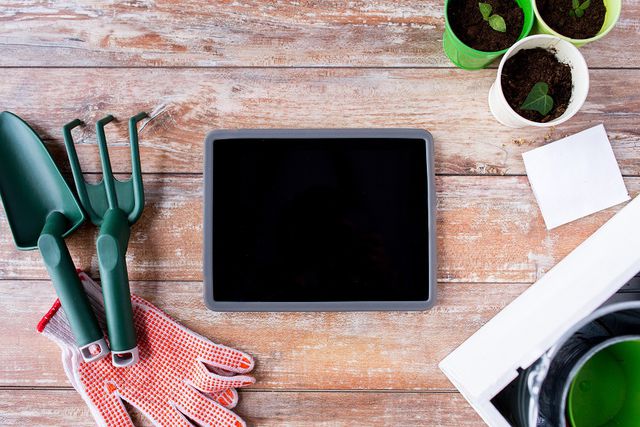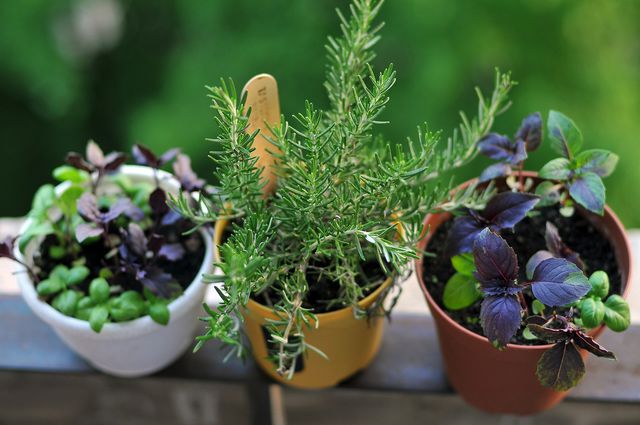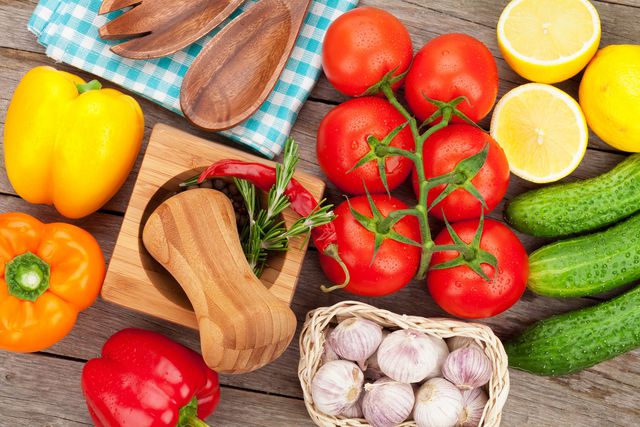A home garden on the windowsill is a great opportunity to pamper your family with fresh herbs at any time of the year. It's nice to cut a sprig of basil from your kitchen garden to make pizza or salad, plus you know for sure that chemical fertilizers and nitrates were not used in the growing process. In addition, green plants purify the air in the room and are an element of interior decoration. If you want to get your own garden on the windowsill, so that even in winter you always have summer at home, use our recommendations.
Garden beds on the windowsill do not require agricultural skills, so children can also be involved in this activity - they usually like to work with the earth and watch how a green sprout appears from a seed, which grows into a large plant or bush. So, you will need flower pots, boxes, jars of sour cream and yogurt, plastic cups, earth from a flower shop, seeds, a small watering can and a spray bottle.

Tip 1. Do not plant different plants in the same pot. The fact is that they need different growing conditions, and besides, many garden crops do not combine with each other. If you want to increase the area of \u200b\u200bthe home garden, make special racks for window sills that will fit many pots, and also use hanging planters.
Tip 2. Do not use the land from the summer cottage, as it can be infected with pests that are almost impossible to get rid of at home. The ideal composition of the earth is sand, earth and humus. Seeds and seedlings are best bought in specialized stores.
Tip 3. The best place for a vegetable garden is the kitchen windows, as the kitchen is humid and warm, which is favorable for growing greens. Sometimes for faster seed germination, mini-greenhouses made of plastic bags are used.
Tip 4. Seeds are soaked in water, and their readiness for planting can be determined by swelling - if sprouts hatch from seeds, plants can be planted in the soil. For soaking, a saucer and a damp cloth are used, on which the seeds are laid out. They need to be filled with a little water and moistened as needed.
Tip 5 Seeds are planted in very moist soil at a shallow depth, covered with earth from above, moistened again, and the earth is slightly compacted. The container is covered with a plastic bag, and after germination, the makeshift greenhouse is removed. Seedlings are watered with warm water as needed.
Tip 6 Despite the fact that most plants are adapted to room conditions, it is desirable to provide adequate lighting for the home garden. Phytolamps are suitable for this purpose, the light of which is as close as possible to solar radiation. Humidifiers and a quality sprayer for spraying plants will be needed to ensure the right humidity.
Tip 7. Don't forget about drainage, which is easy to do at home. To do this, pour expanded clay on the bottom of a pot or other container with a layer of 2–3 cm, and cover it with earth on top. This is necessary so that the water does not stagnate in the soil and improves air exchange. Drainage prevents root rot and mold in the soil.
Tip 8 Plants need nutrition, so choose quality organic fertilizers that will not harm the health of your loved ones. Some housewives are inventive, using not only ash, but also eggshells, banana peels or yeast.
Hit parade of plants suitable for home "beds"

It is best to choose unpretentious crops that quickly yield crops and do not require large time and material costs. And there are a lot of such plants - choose to your taste!
Green onion. It doesn't even require land to grow. Plant the bulb in a jar of water so that its bottom is always moist, and harvest the first crop in two weeks.
Dill. Dill seeds can be sown in the soil without soaking, the main thing is to ensure regular watering. To spoil the bed with dill, you need to try very hard. The most fruitful and unpretentious variety of dill is "mushroom".
Parsley. It is better to pour parsley seeds with warm water for a day, then dry and rub with dry sand - thanks to this, the seeds will harden, enrich with minerals and sprout faster. Parsley loves moisture, so water it often and don't let the soil dry out.
Basil. When planting, leave about 5-6 cm between the basil seeds, as the bushes are very sprawling and freedom-loving. Place the plant box in the warmest spot in your kitchen, as basil doesn't like the cold.
Spinach. It should not be planted deep, otherwise it will take too long to harvest. All that is needed for complete happiness is the sun and abundant watering, and the best varieties for growing at home are “gigantic” and “melody”.
Saffron. This plant is propagated by bulbs that are planted in moist soil, and then the pot is stored for two months in the refrigerator until the sprouts grow 5 cm. After that, you can put the saffron in a sunny and warm place, water it moderately and use this fragrant spice in dishes.
Arugula. There are only three things you need to know about arugula. Its seeds should be planted at a depth of 1-1.5 cm, the plant should be provided with excellent natural or artificial lighting and watered frequently.
Ginger. Place the ginger root in warm water at 36-38 ° C for four hours until buds sprout from it. Then plant in a spacious pot with the buds up to a depth of 3 cm and water the soil as it dries. Provide ginger with good lighting, but not in direct sunlight, and after 5-7 months you can dig up the overgrown roots and eat them.
Watercress. This remarkably hardy plant can be grown in a layer of damp cotton wool, with the seeds pre-soaked in water. Create a greenhouse effect with plastic wrap and place the cotton wool in a semi-dark place. After a few days, when the seeds begin to germinate, remove the film and do not forget to moisten the cotton. A week later, you can harvest and enjoy fresh herbs.
Celery. It does not like moisture and germinates very slowly - within 2-3 weeks if you grow it from seeds. There is an easier way to get tasty and healthy greens. It is necessary to cut off the base of the stalk bought in the store, put it in water, wait for the roots and the first leaves, and then plant it in a pot. After two weeks, there will be more leaves, and you can make a salad for the whole family.
Coriander. 1-2-year-old plant varieties sprout well, and it is better to plant them three pieces per pot. Water coriander generously and loosen the ground, and the first shoots will appear in two weeks.
Spicy pepper. Early maturing varieties sprout well, which, moreover, do not need additional lighting. Germinated seeds are planted to a depth of 1 cm and covered with a film, and when sprouts with several leaves appear, each plant should be planted in a separate pot. If you manage to create excellent conditions for pepper, it will delight you with a harvest for five years.
Cucumbers. Buy special indoor varieties of cucumbers that are able to self-pollinate, sow the seeds in the soil and water abundantly. Shoots appear already on the 2-3rd day, and you will only have to feed the cucumbers with infusion of wood ash.
Strawberry. Decorative ampelous strawberry bears fruit all year round in low light conditions, so it is ideal for indoor conditions. To begin with, plant the bushes in pots, hold for two weeks in a cool place, and then move the strawberries to a special soil. Now you have to water it, and after flowering, “work” as a bee, pollinating the inflorescences with cotton swabs.
Leaf salad. It requires additional lighting, abundant moisture and periodic thinning. However, do not overwater with watering, otherwise the lettuce roots will begin to rot.
Leaf mustard. After sowing the seeds, take the pot to a warm and dark place, and as soon as the first shoots appear, provide them with optimal lighting. Leave three bushes in each pot, and after a month you can add spicy fragrant leaves to the salad.
Radish. For planting, choose large brown seeds - they are the most viable and "promising". Radishes can sprout already on the third day - he likes cool temperatures, so the room should be ventilated more often.
Bell pepper. It is enough to plant a perennial plant only once, and then it will delight you with crops all year round. Sweet pepper is a very pampered culture, it does not like drafts and dark places, it requires loosened soil and warm temperatures.
Mint. Purchased sprigs of mint should be put in a glass of water, wait for the roots and plant in a pot. Water regularly and enjoy its fragrant aroma.
Rosemary. Propagated by seeds and cuttings - the cuttings are first planted in wet sand under the film, and after the roots appear, they are transplanted into the soil.
Marjoram. It grows well from seeds, can overwinter on an insulated balcony and easily tolerates a lack of light. Marjoram is an ideal plant for a home in harsh climates.
Oregano. This spice is undemanding to the quality of the soil, loves a lot of sun and rises for a long time, so you have to wait three weeks for sprouts. Water oregano should be moderate, avoiding stagnant water.
Thyme. Indifferent to heat, but loves light, preferring dry and light soils. Needs constant ventilation and moderate watering.
Tomatoes. Even such complex crops can be grown on the windowsill, only self-pollinating hybrids should be chosen, which are also small-fruited and undersized varieties. Seedlings are planted in pots with "correct" soil and watered sparingly. New bushes can be obtained by cuttings - they take root well and bloom faster.

You can grow tangerine, lemon, and pomegranate on the window, but this is already a more complicated and troublesome process. It is not necessary to turn all the windows into plantations, but even if you have dill, parsley and green onions on your kitchen windowsill, the room will look more cheerful, and the dishes will become much tastier. Verified by personal experience!














